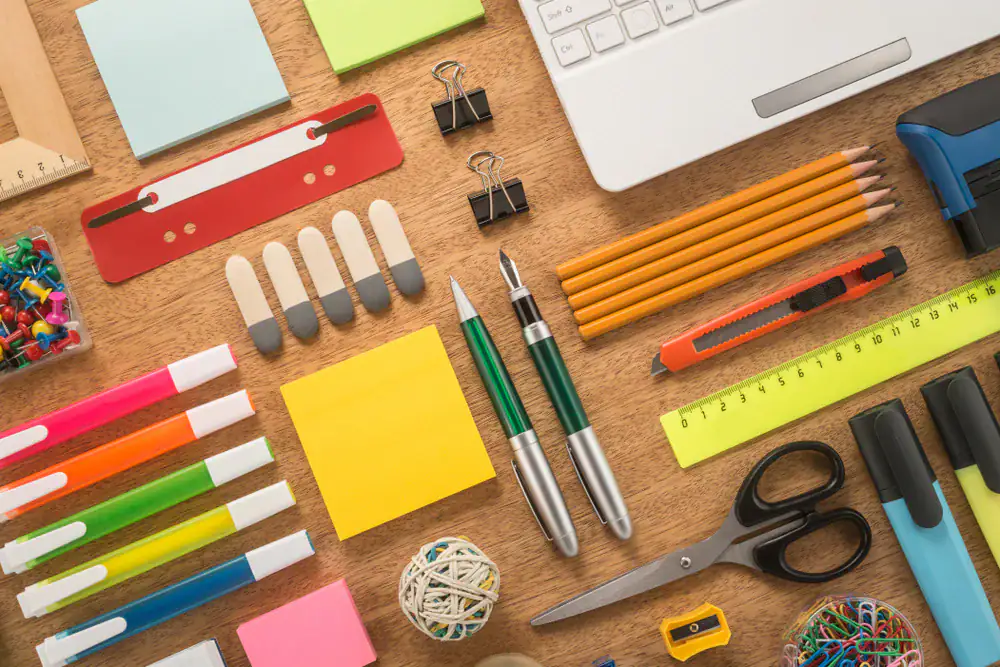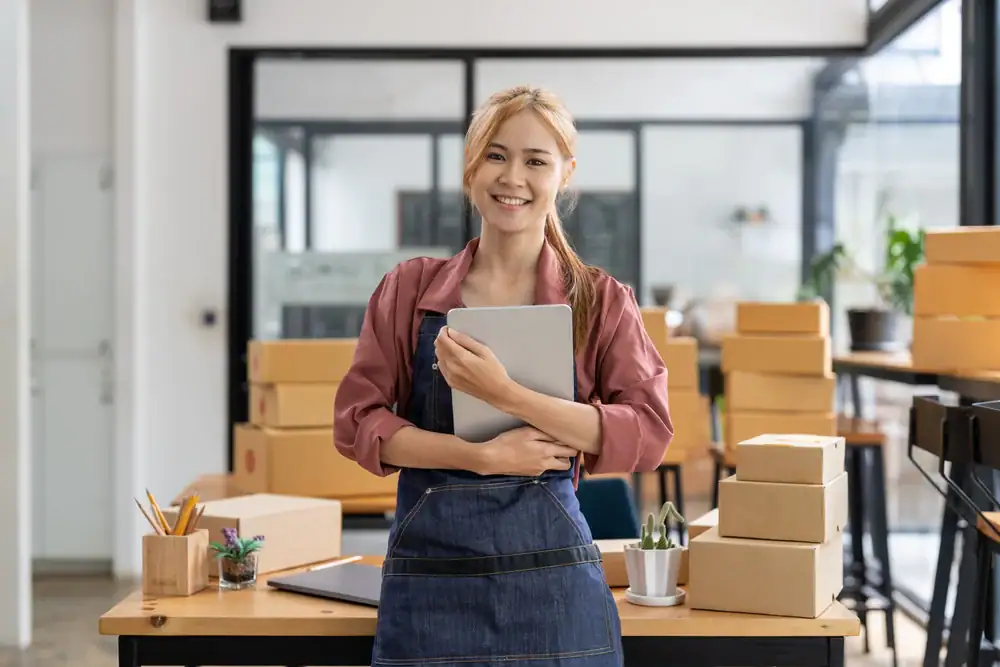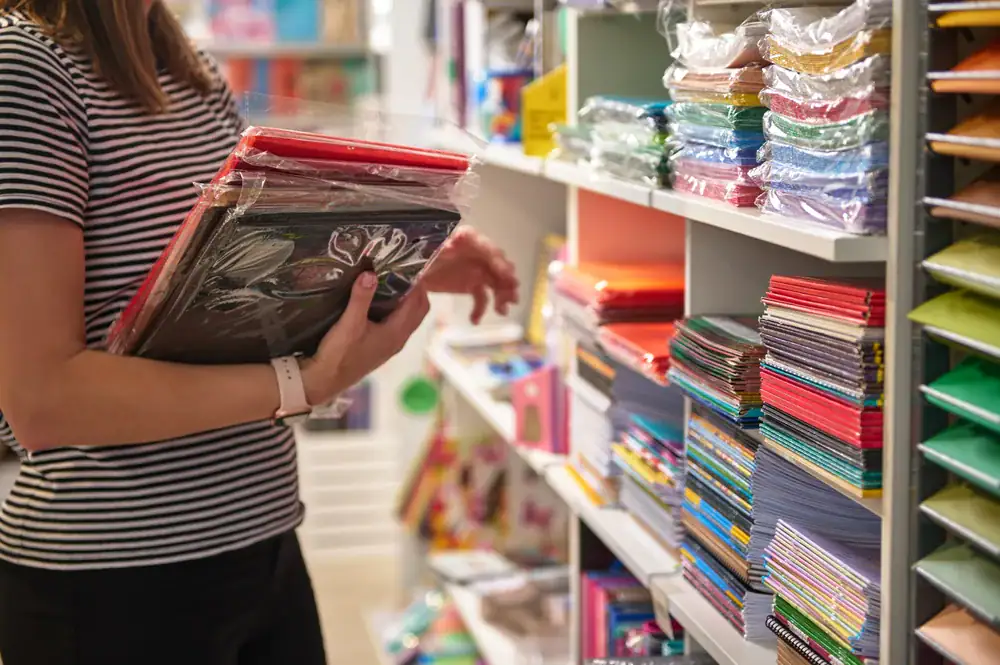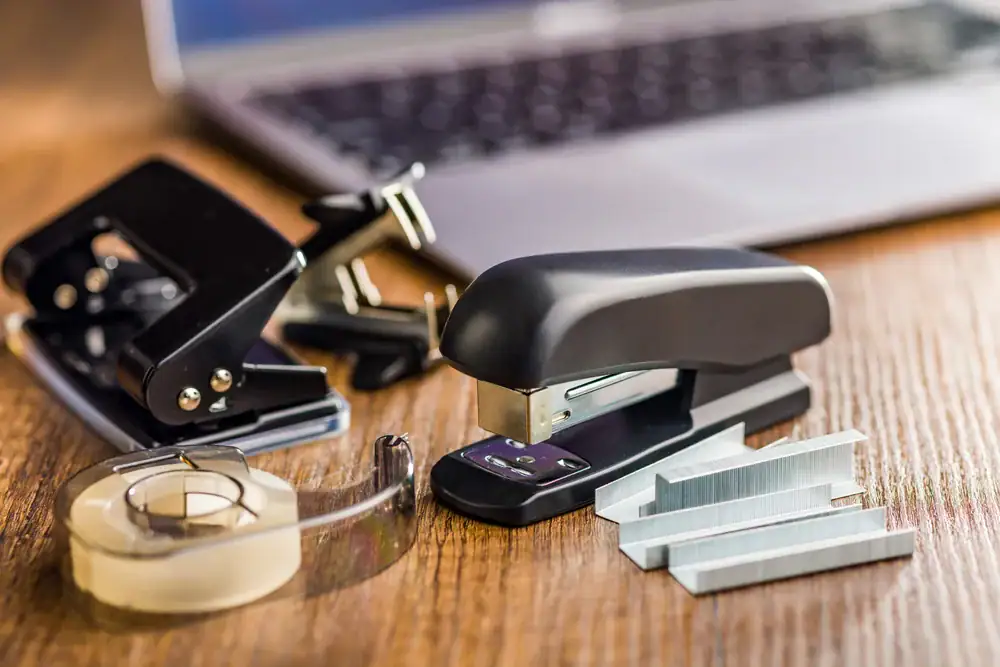Summary:
The Growing Demand for Sustainable and Eco-Friendly School Supplies
Teachers and schools are increasingly prioritizing environmental responsibility in their purchasing decisions. Focus on sustainability is also growing; people prefer more environmentally friendly products. This is making manufacturers work towards making greener options.
This shift isn’t just about feeling good—it’s about teaching students environmental stewardship while managing tight budgets. Recent data indicate a growing inclination towards eco-friendly products, spurred by heightened environmental awareness among consumers. This trend is particularly prevalent among younger generations, who prioritize sustainability in their purchasing decisions. Moreover, retailers are responding to this demand by incorporating more environmentally friendly products into their campaigns.
Prince William County educators are leading this charge, seeking recycled notebooks, biodegradable art supplies, and refillable markers that reduce waste while stretching classroom budgets further.
Why Eco-Friendly Materials Are Becoming Classroom Essentials
The push toward sustainable supplies goes beyond environmental concerns—it’s reshaping how teachers think about long-term classroom investments. When you’re already spending around $500 of your own money on classroom supplies over the course of the year, durability matters as much as environmental impact.
Eco-friendly supplies often last longer than traditional alternatives. Recycled paper products maintain quality while reducing costs. Refillable markers and reusable organizational tools mean fewer replacement purchases throughout the year. For Virginia teachers who can only deduct up to $300 of qualified out-of-pocket expenses on their taxes—a $50 increase over the deduction allowed between 2002-2021—every dollar saved matters.
We’re responding by partnering with manufacturers who prioritize both sustainability and affordability. This means Prince William County teachers can access bamboo rulers, recycled construction paper, and plant-based crayons without breaking their personal budgets. The key is finding suppliers who understand that environmental responsibility and budget consciousness aren’t mutually exclusive.
Smart purchasing decisions also involve bulk buying options for schools and teacher teams. When multiple classrooms coordinate their eco-friendly purchases, everyone benefits from better pricing while reducing packaging waste. This collaborative approach is becoming increasingly common as educators recognize the power of collective purchasing.
How We're Sourcing Sustainable Educational Materials
The push toward sustainable supplies goes beyond environmental concerns—it’s reshaping how teachers think about long-term classroom investments. When you’re already spending around $500 of your own money on classroom supplies over the course of the year, durability matters as much as environmental impact.
Eco-friendly supplies often last longer than traditional alternatives. Recycled paper products maintain quality while reducing costs. Refillable markers and reusable organizational tools mean fewer replacement purchases throughout the year. For Virginia teachers who can only deduct up to $300 of qualified out-of-pocket expenses on their taxes—a $50 increase over the deduction allowed between 2002-2021—every dollar saved matters.
We’re responding by partnering with manufacturers who prioritize both sustainability and affordability. This means Prince William County teachers can access bamboo rulers, recycled construction paper, and plant-based crayons without breaking their personal budgets. The key is finding suppliers who understand that environmental responsibility and budget consciousness aren’t mutually exclusive.
Smart purchasing decisions also involve bulk buying options for schools and teacher teams. When multiple classrooms coordinate their eco-friendly purchases, everyone benefits from better pricing while reducing packaging waste. This collaborative approach is becoming increasingly common as educators recognize the power of collective purchasing.
Digital Integration and Technology-Enhanced Learning Materials
The classroom of 2025 looks dramatically different from just five years ago. More schools are now adopting digital learning tools in their programs, changing the market. This means a high demand for tech supplies, including tablets and educational software.
But here’s what’s interesting—digital integration isn’t replacing traditional supplies. Instead, it’s creating demand for hybrid materials that bridge physical and digital learning. Teachers need organizational systems for tablets, charging stations that don’t overwhelm classroom circuits, and traditional supplies that complement digital tools rather than compete with them.
Prince William County’s diverse student population, with 70% minority enrollment, means teachers need flexible materials that support various learning styles and technological comfort levels.
Essential Tech-Support Supplies Every Modern Classroom Needs
Technology integration has created entirely new categories of classroom supplies that didn’t exist a decade ago. Teachers now need cable management solutions, device storage systems, and charging stations that can handle 25+ tablets without overloading classroom electrical systems. These aren’t luxury items—they’re essential infrastructure for modern learning environments.
The challenge for educators is that these tech-support supplies often aren’t included in school budgets, leaving teachers to purchase them personally. A basic tablet charging cart can cost several hundred dollars, while cable organizers, screen cleaning supplies, and protective cases add up quickly. For teachers already spending an average of $610 on school supplies for their students and classrooms throughout the 2023-2024 school year, these additional technology costs create significant financial strain.
We’re responding by offering modular solutions that teachers can build over time. Instead of requiring a massive upfront investment in a complete charging system, we’re providing individual components that can be purchased gradually as budgets allow. This might mean starting with a basic power strip and cable organizers, then adding tablet stands and storage solutions throughout the year.
The key is understanding that technology supplies need to be as durable as traditional classroom materials. Cheap cable organizers that break after a month create more problems than they solve. Teachers need tech-support supplies that can withstand daily use by energetic students while maintaining functionality throughout the entire school year.
We’re also recognizing the importance of compatibility across different device types. Prince William County classrooms might use iPads, Chromebooks, or various Android tablets, so we stock universal solutions that work across multiple platforms rather than device-specific accessories that limit flexibility.
Balancing Screen Time with Hands-On Learning Materials
The most successful classrooms aren’t going fully digital—they’re creating balanced learning environments where technology enhances rather than replaces hands-on activities. This means teachers need traditional supplies that work seamlessly alongside digital tools, creating learning experiences that engage multiple senses and learning styles.
Manipulatives become even more important in tech-integrated classrooms because they provide tactile experiences that screens can’t replicate. Math counters, science experiment kits, and art supplies serve as crucial counterbalances to screen-based learning. The challenge is finding traditional supplies that complement digital lessons rather than competing with them for students’ attention.
We’re adapting by curating collections that specifically support blended learning approaches. This might mean stocking dry-erase boards designed to work alongside interactive displays, or offering art supplies that help students create physical representations of digital concepts. The focus is on materials that bridge the gap between virtual and physical learning experiences.
Teacher feedback is driving innovation in this space. Educators are requesting supplies that help students transition smoothly between digital and hands-on activities within the same lesson. This has led to demand for flexible furniture solutions, portable organization systems, and materials that can be quickly deployed and stored as lessons shift between different learning modes.
Our approach involves helping teachers understand how traditional supplies can enhance digital learning rather than distract from it. When teachers see manipulatives as tools that reinforce concepts introduced on screens, they’re more likely to invest in both digital and traditional materials that work together to create comprehensive learning experiences.
Budget considerations remain crucial in these decisions. Teachers need assurance that investing in both digital support materials and traditional hands-on supplies will improve student outcomes enough to justify the personal expense. We’re addressing this by offering combination packages that provide both types of materials at better prices than purchasing them separately.
Supporting Prince William County Educators Through Educational Supply Evolution
The future of educational supplies isn’t about choosing between traditional and digital, or between affordability and sustainability. It’s about finding solutions that support teachers who are already investing their hearts and wallets into student success.
Prince William County educators deserve supply stores that understand their unique challenges—from serving diverse student populations to managing personal budgets stretched thin by professional dedication. The trends shaping educational resources in 2025 all point toward one truth: teachers need partners, not just vendors.
Whether you’re setting up your first classroom or refreshing a space you’ve called home for decades, we recognize that every purchase represents your commitment to student learning. That’s why we’re evolving alongside these industry trends to serve you better. Contact School & Office Annex Now!





